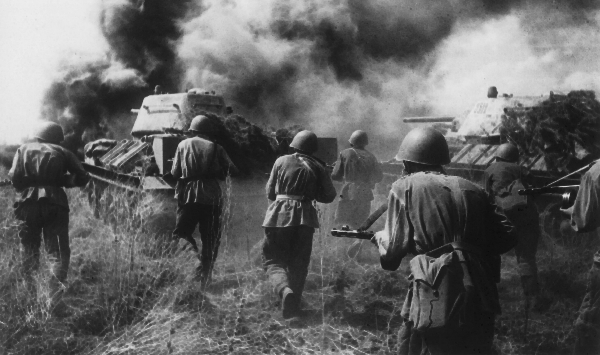
Demolishing the Myth
The Tank Battle at Prokhorovka, Kursk, July 1943: An Operational Narrative
By Valeriy Zamulin. 672 pp.
Helion & Company, 2011. $69.95.
For anyone interested in the war between Russia and Germany, the battle of Prokhorovka had it all. On July 12, 1943, the Eastern Front’s essential elements coalesced here in a perfect metaphorical storm. A dramatic, climactic head-on clash between an elite Soviet tank army and the Waffen SS was spearheaded by a muzzle-to-muzzle, hull-to-hull confrontation between the war’s finest signature tanks—Germany’s Tiger and Russia’s T-34. At day’s end, the report allegedly raced across Soviet radio networks: “The Tigers are burning!” No more needed to be said.
It’s a swell story, and historians liked it as much as anyone. But in recent years, scholars examining surviving German records in detail have unearthed significant data that undercuts its dramatic flair. Far from being annihilated, the Tiger units lost only a few tanks. In fact, the Soviet Guards tangled themselves in the terrain, the dust, and their own numbers, suffering massive losses for no significant gain. Indeed, current orthodoxy among historians redefines Prokhorovka as a German local victory that, if properly understood and exploited at the time, might have salvaged something from Operation Citadel.
Historian Valeriy Zamulin restores balance to the battle with this remarkable volume, one of the finest examples of World War II operational history published since the Soviet Union’s collapse. Beginning in the 1990s, he worked with newly declassified operational accounts prepared by the Red Army units engaged at Kursk, and with participant accounts in the Prokhorovka Field Museum. He then dove deep into German sources. Several years after its Russian publication, here at last is an English edition.
“Definitive” is a tag abused by reviewers, but for this book it is unavoidable. For starters, Zamulin establishes the actual numbers and the losses on both sides. He presents the personalities and abilities of Russian commanders who have too often previously appeared as mere opposite numbers to their German adversaries. And he describes German and Russian troop movements, operationally and behind the lines, with astounding clarity since this pivotal battle was defined by hamlets and hills never heard of before or since.
Detailed and coherent, focusing down to company level when appropriate, Zamulin’s Demolishing the Myth concludes that Prokhorovka was not in fact World War II’s largest tank battle—that distinction goes, ironically, to one of the Soviet disasters during Barbarossa’s opening weeks. It accepts that German tank losses were much less than generally thought. It makes no effort to conceal Soviet errors of command and execution. It even concedes that the Germans held their ground and prevented a Soviet breakthrough.
But what really counts is that the Germans, too, were stopped completely. Their best troops, under their best commanders, failed to execute a comprehensively planned operation. After this, the Red Army never turned back, while the long German retreat led inexorably to the streets of Berlin.




